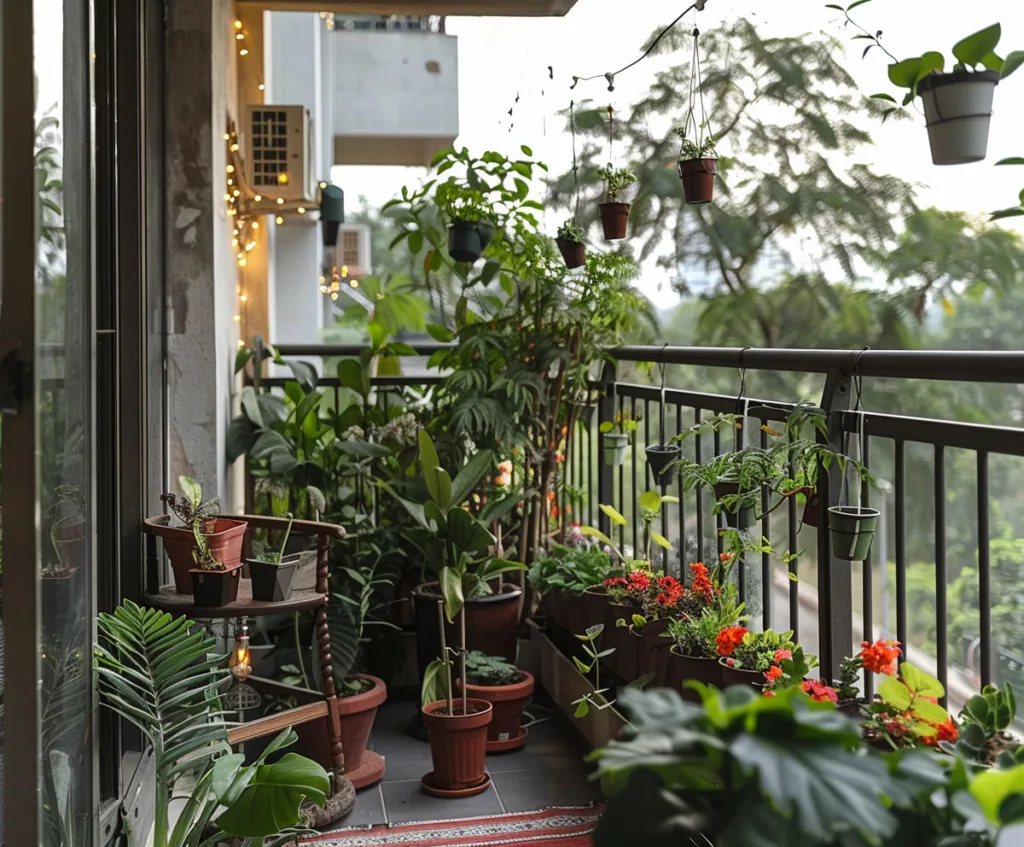As urban areas expand and natural habitats decrease, creating spaces that support biodiversity has become increasingly important. College campuses, often equipped with numerous buildings and student apartments, present a unique opportunity to contribute to environmental sustainability. By transforming apartment balconies into micro-habitats, students can enhance local biodiversity and get a hands-on learning experience in ecology and sustainability.
Incorporating nature into everyday environments does more than beautify the space. It plays a crucial role in conservation education and promotes a balanced ecosystem. The use of a custom term paper writing service can help students explore the academic underpinnings of such projects, empowering them to apply theoretical knowledge in practical, real-world settings.

Creating Your Micro-Habitat
Choosing the Right Plants and Features
Initiating a biodiverse balcony begins with choosing the appropriate plants. Opt for native species, which are naturally attuned to local climate and soil conditions, thus requiring less water and maintenance compared to exotic varieties. Additionally, native plants provide the necessary resources for local wildlife, such as bees, butterflies, and birds, which are crucial for pollination and maintaining healthy ecosystems.
Opting for a variety of plants can also ensure year-round food and shelter for visiting wildlife, enhancing ecological balance. Selecting flowering plants that bloom at different times of the year can further increase the biodiversity and visual appeal of your micro-habitat.
Structuring Your Space
Effective use of space is crucial in balcony gardens. Employing vertical gardening methods like trellises and hanging plants is an effective way to enhance space utilization without compromising functionality. Incorporating features like small water sources, such as bird baths or water dishes, can also attract wildlife, further enhancing the balcony’s biodiversity.
Additionally, arranging plants at different heights and layers not only optimizes space but also mimics natural habitats, which can attract a diverse array of organisms. Adding elements like rocks and wood can create microclimates and hiding spots for various insects and small animals, promoting even greater biodiversity.
Sustainable Practices
Using organic soils and avoiding pesticides are essential steps in maintaining an eco-friendly micro-habitat. Composting organic waste can reduce garbage output while providing high-quality soil for the plants. These practices not only support a healthier ecosystem but also teach students about sustainable living methods.
Engaging in these practices allows students to observe the benefits of sustainability first-hand, promoting a more environmentally conscious lifestyle that can extend beyond their time at college. Moreover, implementing rainwater collection systems to irrigate the balcony garden can further enhance the sustainability of the habitat, conserving water and reducing reliance on treated municipal supplies.
Regular Observation and Care
To ensure that your balcony micro-habitat thrives, regular monitoring and maintenance are crucial. Maintenance tasks include regular watering, pruning, and monitoring for any signs of pests or diseases. Keeping a close eye on plant health helps prevent issues from becoming severe and teaches students about the ongoing responsibilities of environmental stewardship.
Additionally, engaging in regular maintenance sessions can be a therapeutic activity, offering students a break from academic stresses. These sessions also provide opportunities for observational learning, encouraging students to note ecological changes and understand seasonal cycles in their micro-habitat.
Educational Benefits and Student Involvement
Learning Through Interaction
Creating and maintaining a micro-habitat provides students with a practical application of ecological and botanical sciences. It’s an engaging way for students to learn about the complexities of ecosystems and the importance of plant and animal interactions. This hands-on experience can complement their academic studies, offering insights that are not as easily gleaned from textbooks alone. Such active participation enhances learning outcomes and provides students with valuable experiences in environmental stewardship.
Community and Well-Being
Besides their educational value, these green spaces play a crucial role in significantly boosting the mental health and overall well-being of students. Studies have shown that interacting with nature can reduce stress and enhance mood, making these micro-habitats valuable in promoting a healthier campus environment. Furthermore, these projects can foster a sense of community as students collaborate on garden planning and maintenance, enriching their social interactions and collective responsibility.
Broadening the Educational Scope
For those interested in expanding their understanding, they might look on these sociology topics that explore how urban greening impacts social behaviors and urban quality of life. Such interdisciplinary studies can enrich students’ academic experience and encourage a more comprehensive understanding of their projects. Engaging with these broader issues not only enhances academic knowledge but also prepares students to tackle real-world challenges related to urban development and sustainability.
Conclusion: The Future of Campus Biodiversity
The development of micro-habitats on college campuses is more than just an educational tool. It’s a contribution to global biodiversity efforts. As pioneers in shaping future leaders and innovators, colleges bear the responsibility to set a precedent in sustainable practices. These small-scale projects can have broad impacts, fostering a culture of environmental stewardship among students that lasts far beyond their college years. By continuing to innovate and expand such initiatives, colleges can play a crucial role in the global movement toward more sustainable living environments.
